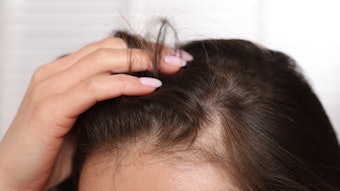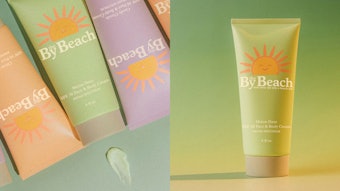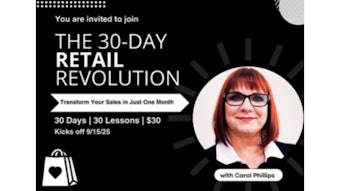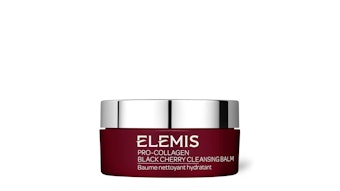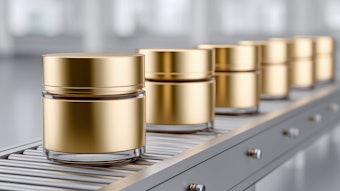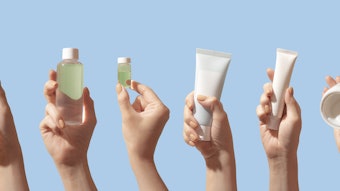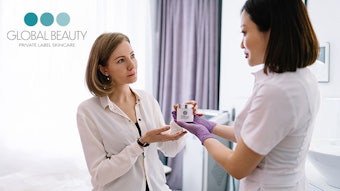
Clearly, improving retail sales and service upgrades is an essential building block to ensuring the financial viability of a spa. However, in this case, just knowing this isn’t enough—it is now time to move from theory to practice. You need to be able to plot specific courses of action to take in order to translate your goals into realistic, measurable and achievable action steps. Information on overcoming obstacles, finding the keys to successful retail sales, motivational tips, a guide to product selection, staff compensation plans, incentive and reward programs, and establishing an action plan that includes ideas on negotiating with and transforming your vendors into strategic partners are all necessary for strong retail growth, and that type of information can be found here.
Sell though education
In the spa, selling must be based upon education. The more you and your spa’s team members know, the better you can impart knowledge on to clients. That, in turn, will yield better treatment results and increased retail sales. Again, just to emphasize, it is about educating—not selling.
The skin care professional must create an at-home skin care protocol that will extend and complement the results of whatever professional treatment or service a client has had at the spa. Link specific products with specific services and treatments to create pre- and post-treatment protocols, and every service should be tied to no less than one product for at-home use. Reach out to your vendors to do this for you, if you need assistance. They should be able to prepare and equip you with key selling points to use in advocating at-home products, and if they will not do this willingly, get another vendor. Make your vendors an extension of your staff, adding their expertise and experience to your spa’s knowledge base.
One important caveat: If you carry more than three lines, it will likely be hard to get the support—financial and otherwise—from a vendor, so don’t spread yourself too thin. If you carry too many lines or only a product or two from a particular vendor, support can be harder to come by. If you invest in vendors, they will invest in you—it’s a two-way street. Try to limit your spa to carrying two to four lines. More than that can be confusing and overwhelming to clients and staff.
For example, an ideal scenario, depending on your spa’s size, might be to have a high-end line, a medical line, a lower price-point range and a spa line plus body products. A private label line may also have a role, but beware, as most private label products do not carry with them all the training and support needed to grow your business. Make sure your vendors provide quality support and education, and ensure the different lines you carry have different selling points. Then always carry six deep of each item.
Next, move into establishing a clear retail strategy. If you need assistance, look to a consultant or vendor who acts as a strategic partner to help. Also, check out professional journals and magazines such as Skin Inc. magazine regularly to get ideas, and find ways to network with your colleagues. Make sure you set aside time for the ongoing training of your staff, as well, so they can develop selling skills and product and protocol knowledge. One way to do this is to have vendors conduct monthly product knowledge sessions for your team.
Establish job expectations
Hire for success. By making sure everyone on your staff—from front desk personnel to skin care professionals to nurses and even the office manager—understands that selling retail products is part of their job, you can easily grow the power of your retail business. If you don’t reinforce this notion regularly, however, you will likely have a very limited chance of succeeding. To ensure your team members keep up with their selling duties, you need to continually clarify job responsibilities, driving home the obligation of all staff to participate in the retail selling process. This must be done with enthusiasm and passion, as it is an important part of seeing to it that everyone gets the best possible results from their skin care program.
Teach your staff to create a short dialogue with clients, relating the services a client is signing up to receive or is receiving with your home care products. In effect, have your team members become treatment tour guides. They should be mindful that less is more—conversations should be short and to the point, and any conversation with a client needs to focus on what the client wants to improve upon, not what the skin care professional initially thinks is wrong with an individual’s skin. Ask questions, don’t tell. Find ways to suggest how a client can obtain their skin care goals. Listening to their thoughts makes the sales process focus on what the client wants to address and helps to building a trusting relationship between staff members and clients. After that relationship is established, there will be ample opportunity for further recommendations.
Also, do not underestimate the importance of front desk personnel to the sales process. Those team members need to be rewarded for success, as well. All too often, the front desk staffers are the first ones to gain a client’s trust, beginning by answering the phone, making an appointment, greeting the individual at her first service and speaking with that person as she exits the spa. Simple etiquette goes a long way. After a treatment, the service provider should walk the client to the front desk, ensuring all is well and letting her know what products are recommended for at-home use. The front desk personnel should then aid in closing the sale.
Top training
Selling is a learned skill. You must assume your staff members are coming to you with little—if any—sales training. Establish a structured program to teach them how to recommend products and upgrades, and include in this training such basic principles as where to stand, what to say and how to say it, and the importance of always maintaining eye contact. At the risk of being repetitive, look to your key suppliers or a consultant to help you in this task if necessary.
One of the most effective tools can be role-playing. Start every day with a member of the staff being assigned to speak on the key selling points of a line or specific product. And look to your suppliers to provide you with this information. Invite vendors and suppliers into your spa to conduct training on site, as well as to provide the appropriate incentives for your staff if team members perform successfully.
Information is power. Show-and-tell presentations by staff are invaluable. Identify the products that your team members need more information on, and get the vendor to explain why a particular product or line is worth purchasing and recommending.
The right products and vendors
Now to ensure you are carrying the right products. Make sure the product lines you select meet the clients’ needs, not yours. Your lines must fit the demographics of your practice. All too often, spas carry lines that a member of the staff likes or is familiar with. Unfortunately, that just doesn’t build a retail business.
The product line’s distribution channel also must protect you and your staff. This is a non-debatable and non-negotiable fact. If you carry a line readily available via retail outlets and channels other than skin care professionals or spas, your success will be limited—if not impossible.
Commissions, incentives and contests
With the growth of sales, the growth of rewards for sales should increase, too. Most spas pay commissions as follows: For 6% of sales, less than 1% commission; for 7% of sales, under 5% commission; 5–9% commission for 10–14% of sales; and 12% commission for 15–19% of sales. In fact, 50% of all spas do not pay front desk personnel any incentives for retail sales.1 And if the staff does not have any incentive to sell, they won’t. Providing incentives for front desk staff, as well as estheticians and other team members, is a key to retail sales. Think about assigning one person to be the retail driver, and have that person keep track of what is selling and who is selling it.
Moving into using commissions to motivate your staff, know that paying commissions is not effective unless you monitor performance and provide feedback to staff members every month to show them how they are doing. And there are several alternatives to paying straight commissions on sales. First, create a minimum sales volume for each staff member before commissions kick in, and make the percentages higher as an individual sells more. Increase percentages as sales volume goes up—for example, the first $500 week in sales pays 5% in commission. Then a $501–1,000 week pays 10%, and, beyond that, a week with more than $1,000 in sales pays a 15% commission or higher.
Another idea is to set up an incentive system based on sales as a percentage of service revenue by treatment type—if up to 40% of a service’s revenue is from retail sales, that leads to a 10% commission. Having 40–60% of the service revenue be from retail means a 15% commission, and a 20% or more commission would be when 60% of the service’s revenue is from retail sales. Still another option is to tie sales goals to specific treatments—for facials, 50% of the treatment revenue should in retail sales; for body treatments, 15% of revenue from retail sales; for laser services, 15–20%; 10% for injectibles; and 10–15% for hair and nails.
If none of these systems seem to fit your business, develop one of your own design. No one formula is perfect, so find the plan that makes selling the most exciting to your staff. And to be sure you are getting the right idea, involve team members in these discussions.
Essentially, an incentive program should be purpose-driven. Pick an area you want to see improvement in—such as the number of items sold, the average sales per team member, or promotion of a specific item or line—then be clear how the success will be measured, and state the reward specifically.
To also give retail sales an inventive flair, make it a game for your spa’s staff. Incentive programs that have been highly successful include:
- Tic Tac Toe—Make a board with squares, which does not necessarily have to be limited to nine. When an item is sold, have the seller put their initials in a square. The first person to make a line or the one with the most boxes at the end of the contest wins.
- Up, Up and Away—Fill balloons with coupons for prizes and money. Then, when a target or goal is hit, have the staffer break a balloon and win the subsequent prize.
- Got the Fever—Draw a simple thermometer on a large piece of paper with a goal number at the top, and color in the sales volume or item total along the way. The first team member to the top wins. This can also be used for an entire staff reward.
- Off to the Races—Set up a race track on a board with goal numbers on it, and assign each staff member a horse. The first one around the track wins.
- Poker—For each retail sales item or target hit, provide the team member with a card from a special deck. At the end of the contest period, the staffer who can make the best poker hand wins.
- Pass the Buck—The person with the highest single sale of the week, largest upgrade or other measured retail sales goal gets $25 or $50. Obviously, the first seller of the contest period is in the lead, so she gets to hold the money. As each subsequent sale is larger and larger, the person holding the $50 has to pass it to the new leader. The person holding the money at the end of the period gets to keep it.
- Go For the Gold—An Olympic-type competition that pays for achieving goals such as largest weekly sales, most items per sale, most sales per day or highest weekly sales. The goals can vary from week to week, as can the prizes, and you can rank staff members first, second, third and so on.
For any of these games, the rewards can be structured to be creative and include one or more of the following: increased commissions during the contest, free products, professional magazine subscriptions, gift cards or professional meeting attendance options. A favorite reward is also the secret shopper assignment, in which the contest winner is assigned to go to a competing spa that you admire and have a paid treatment or service. They then report back to your team on the pros and cons of what others are doing.
Vendors as strategic partners
Rewarding your spa’s staff members is a great way to encourage them to help move retail sales, sure, but how should you pay for these rewards? By now, you can likely guess the answer: Get your vendors to chip in by supplying free products, cash and the like if their products are at the center of the retail sales drive. It really is a win–win situation.
And even though all vendors can’t always do all of the following, do be sure to ask them what kinds of incentives they can offer you. If they do not do what you need, move on. The vendor-provided incentive options can include: no minimum orders, seasonal incentives, participation in employee incentive programs, employee discount programs, education and training programs, marketing and open house support, trade-out and buy-back programs, direct shipping to clients, newsletter support, collateral materials at little or no cost, special discounts for testers, no-questions-asked returns, visitations, technical support, hotline options, protocol development, signature treatment design, menu assistance and a speaker’s program.
Stellar retail space
Moving into the location of the products themselves, your retail space should be neat and clean, provide good visibility, create excitement and be easily accessible to your clients. It should also be educational and informative, organized by collection, range and order of application. Allocate at least 15% of your facility’s space to retail and keep impulse items by the checkout counter. Also, remember that most women’s average height is 5 feet, 5 inches, so keep products at eye level as much as you can, and put the spa name everywhere to help build your brand. Point-of-purchase displays and shelf-talkers help build retail sales volume and profits, as well.
You should be able to measure your sales as a percentage of total spa revenue, by type of item sold—skin care, spa accessories, gift or apparel—retail sales per ticket, sales by staff member, sales per square foot, and inventory turnover by item. Note this simple fact: Higher retail sales and faster turnover equals greater profits, so you should look to turn your inventory over every 60–90 days.
Be the seller
Finally, all of the above retail initiatives lead to a retail sales program2 that has you preparing for a sale equipped with business-specific information about your spa on product knowledge, selecting the right product mix, making sure your skin care supplier is a strategic partner, investing in training and educating your staff, asking and discovering your client’s needs, learning to initially ask—not tell—clients about problems, presenting products as solutions and as a continuation of professional treatment protocols, practicing overcoming objections, and closing the sale. And never forget to follow up with calls after clients’ visits so you can build on that initial sale, translating the treatments and products into future visits and additional retail revenue.
REFERENCES
1. Day Spa Association
2. www.experienceispa.com, ISPA, Retail Management for Spas (1995)
